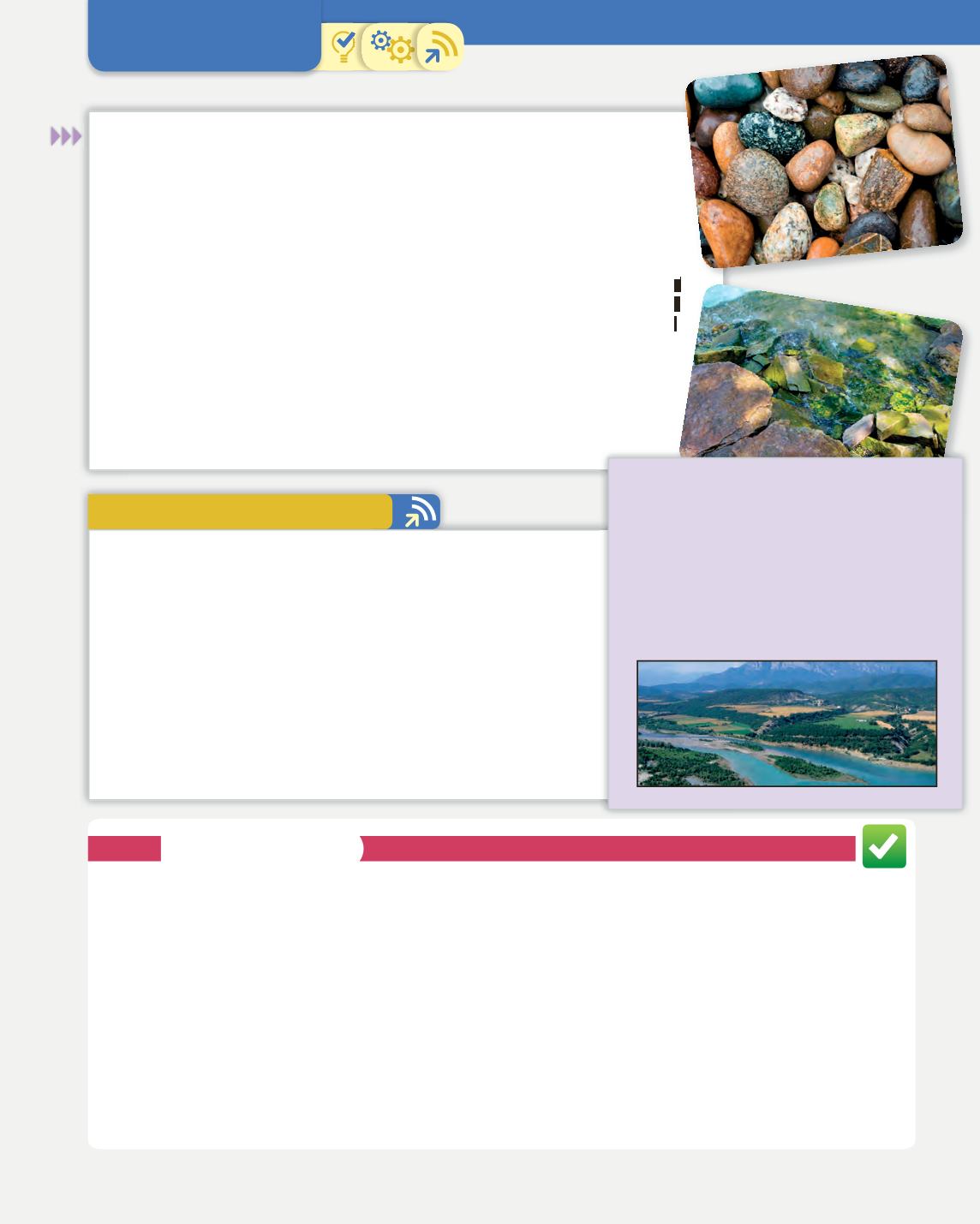
2. Relief
45
Once the information is compiled, make a mural to help you present your
work to the class. Imagine that experts from the
National Geographic
will
be attending your presentation.
The mural should include the following elements:
❚
A photograph of the relief that you have analysed.
❚
A fact file about the photo which includes information about the areas
and the features that distinguish them, the agents that have been
involved and the resulting relief.
If you wish, make a digital mural and post it on the class blog. You can
use
Glogster
(or a similar application) and include text, images and videos.
Communication and publication
3. Explain your area of relief
For example, in the river in the photo, the riverbed has formed different levels of
terraces. The older terraces are higher; and the more recent terraces are lower,
near the river. This is because the river cuts through the earth, transporting and
depositing materials.
4. Analysis of some elements
For example, in the relief in the photo, the fluvial deposits in the riverbed could be
analysed. In the photo on the right, the angular stones indicate that they have been
removed from areas nearby and relatively recently, because they have barely been
eroded by the river. In contrast, the pebbles (rounded stones) show us that the water
has carried them for longer and they come from further away. In the relief of the
photo, the fluvial deposits are pebbles, gravel, sand and clay.
In a cliff, we could analyse the tides, the strength of the waves, etc.; in a karst cave,
we could observe the amount of water that is visible, the length of the stalactites
and stalagmites, and so on.
Final task
1.
What aspects do you think are essential in the description of a type of relief?
2.
What factors have been involved in the formation of this relief? How have humans affected it?
3.
What do you think the place you chose will be like after a lot of time has passed?
4.
Explain why you chose this area for your task.
5.
Which of the types of relief chosen by other groups caught your attention the most?
6.
Make a list of all the sensations related to sight, hearing and smell that the places chosen by the different
groups have transmitted.
7.
What have you learned from the other groups’ presentations?
8.
What have you learned from working in a group? What did you contribute to the success of your group’s
work?
ANALYSIS OF A TYPE OF RELIEF
❚
Different units
: riverbed, terraces, mountain
slope.
❚
Analysis of some elements
: fluvial deposits
in the form of pebbles, gravel, sand and clay.
❚
Agents that have been involved
: water,
human beings.
❚
Resulting relief
: fluvial terraces of different
levels, ravines and gullies.
Pebbles (above) and
angular stones
SELF-ASSESSMENT


